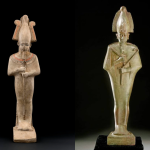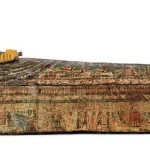Relief of a Woman in Blue Dress
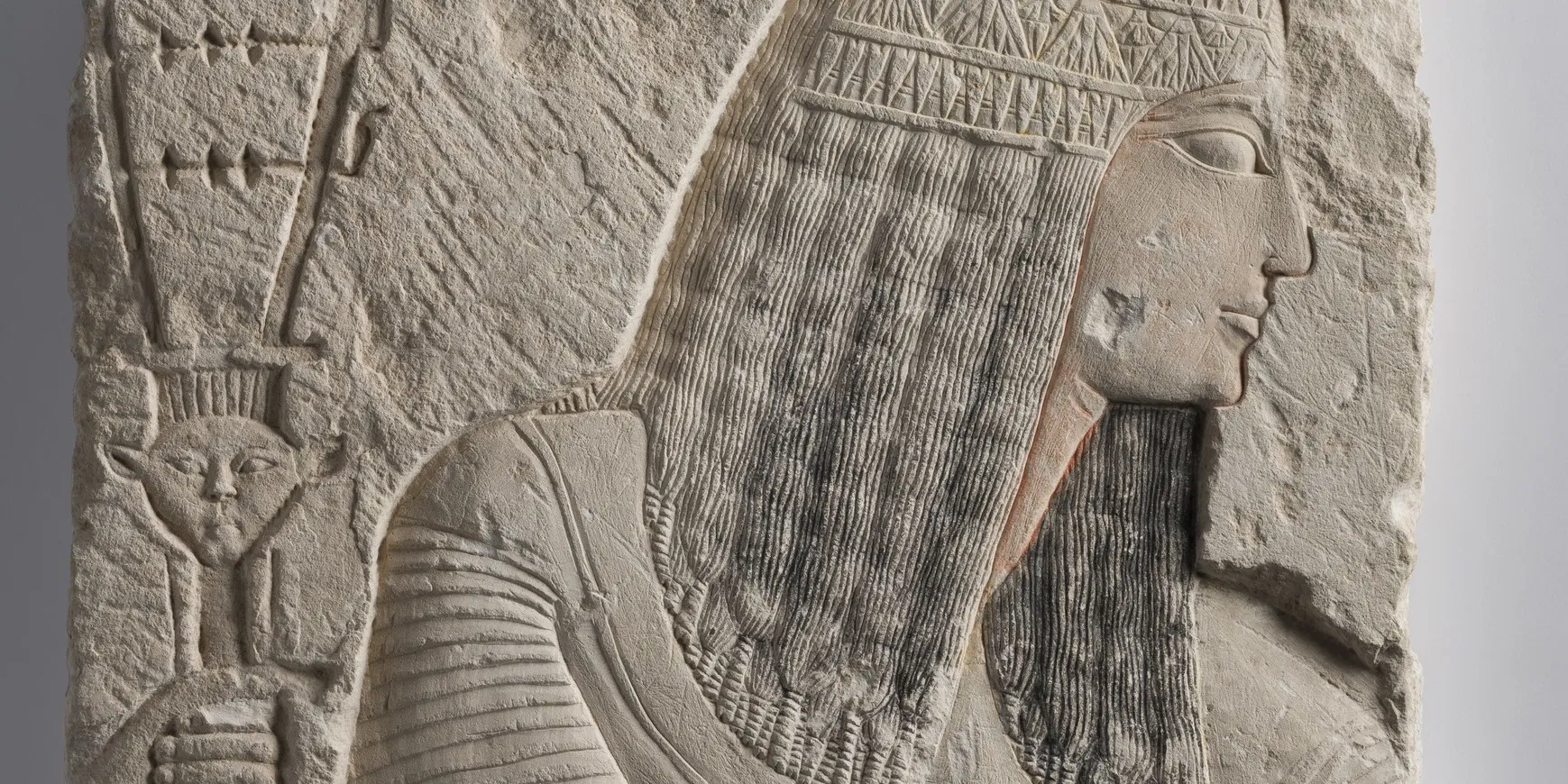
This painted limestone relief portrays a standing woman dressed in a pleated, sheer linen gown tinted blue. She wears an elaborate wig, secured by a diadem of blossoms, with a band tied around its middle and knotted at the back. This detail gently pulls the wig backward, revealing strands of her natural hair, seemingly dyed with henna. Above her forehead blooms a lotus flower, and atop her head rests a scented wax cone, symbolizing fragrance and divinity. Around her neck lies a magnificent broad collar necklace, complemented by a wide bracelet adorning her wrist.
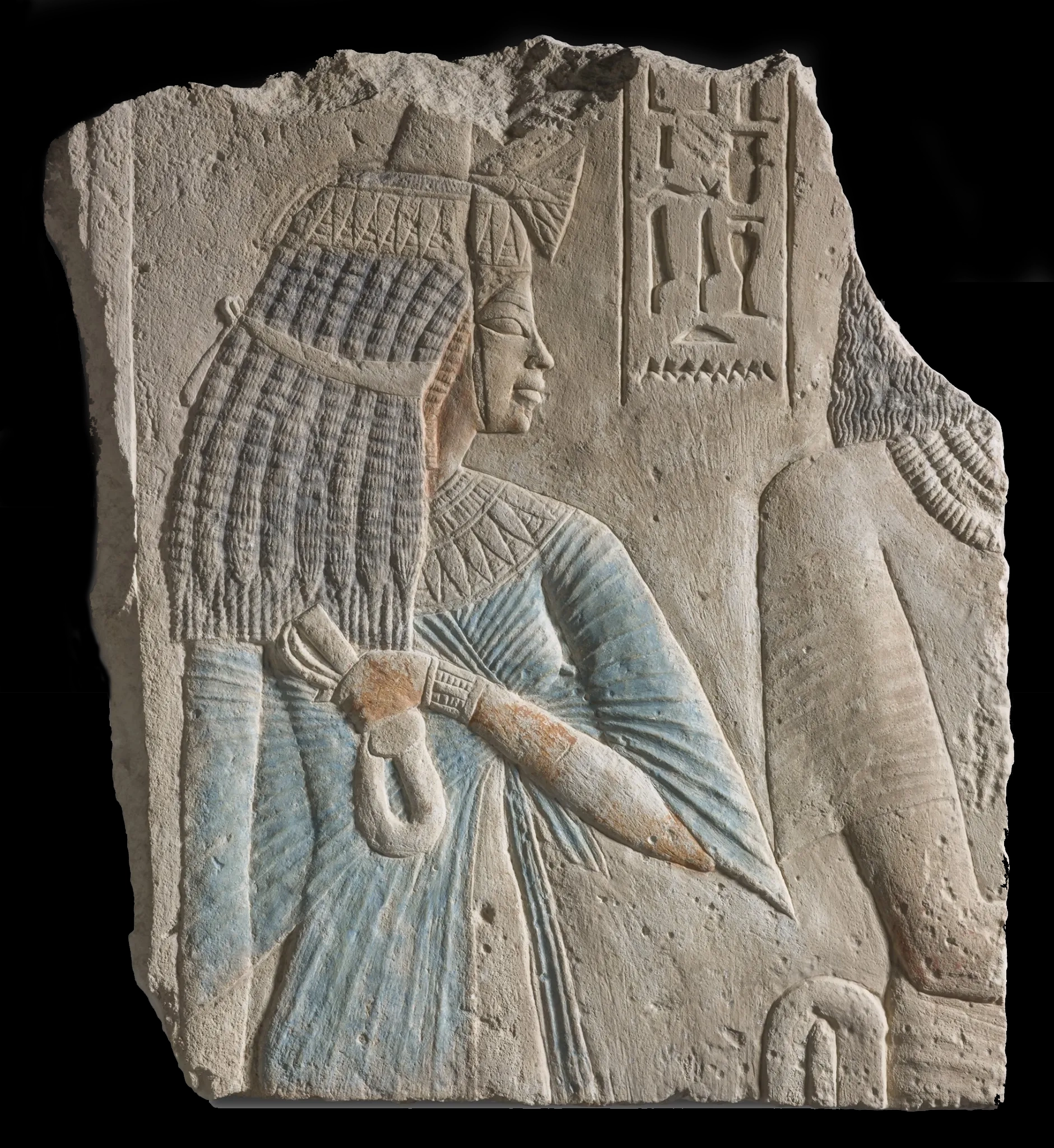
Her left arm conceals a knot in her dress beneath the breast, subtly emphasizing the elegance of her figure. In her left hand, she holds a menat necklace, an object believed to promote health, good fortune, and protection against evil spirits. Beyond its symbolic meaning, the menat also functioned as a ritual percussion instrument, shaken by women during religious ceremonies to honor the gods.
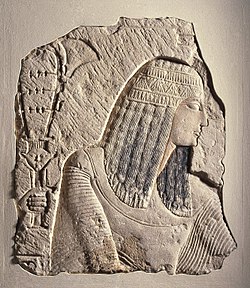
An inscription nearby describes her only as “[The one who] is the object of his affection, the one who is praised by…,” suggesting her importance and reverence. The menat necklace, closely linked to the goddess Hathor, consisted of multiple rows of beads and required a heavy counterweight resting between the shoulder blades to balance it across the chest. While sometimes worn as jewelry, it was more commonly used in ritual contexts by women of status, such as the “Chantresses of Amun-Re” during the New Kingdom. The counterweight itself also served as an amulet, believed to hold protective powers, often enhanced by the image of a deity, such as Sekhmet.
This exquisite piece dates to the New Kingdom, 18th–19th Dynasty (ca. 1550–1186 BC) and is now housed in the Fondation Gandur pour l’Art, Geneva.








